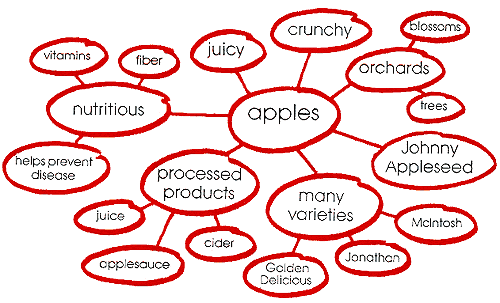
The Big 5 A teacher's guide to literacy in the classroom
Vocabulary: the Key to Communication
Research shows that adults need to hear a word 17 times before it is committed to permanent memory. If adults, who are accustomed to and practiced at absorbing masses of new information, require this much practice for one word, just imagine how hard children must work to internalize and remember everything they are exposed to each day! Vocabulary refers to the words necessary to communicate effectively through listening, speaking, reading and writing.
Can't I just give my students word lists to memorize?
No! Asking students to remember words based on rote memorization may yield high marks on vocabulary tests, but is not the way to help students truly understand word meanings in a way that they will remember and can use properly. The majority of words that students learn and use are acquired indirectly through listening and reading, you do need to teach some words explicitly, as well as word learning strategies to help students learn to make sense of and remember unfamiliar words. Recognizing and reading words in a text are skills that students must master, but without knowing the definitions and uses of these words, the meaning of reading is completely lost.


What should I know about teaching vocabulary?
A great deal of vocabulary is learned simply through everyday interactions and exposure to written language. This doesn't mean that you should not or do not need to teach vocabulary words directly. It is helpful to teach key words from a text to students before reading the text. Words should fall into the 'tier 2' category - not too simple and not too advanced or context-based. Vocabulary instruction should include explanation and practice with affixes, word parts such as prefixes, suffixes, root words, and base words.
Because so much of a student's vocabulary is learned indirectly, your job is primarily to teach strategies for students to learn and remember less common and new words. It is important to recognize that vocabulary knowledge can be understood in several ways. A student with a wide breadth knows a lot of words but may not necessarily know how to use them. A depth of vocabulary implies greater knowledge about words and how to use them properly. Depth can be characterized by levels of word knowledge; unknown words, acquainted (basic idea of meaning), and established words (very familiar and able to use correctly).
Ways to promote vocabulary building in the classroom include providing extensive opportunity for daily oral language activities, reading aloud from language-rich texts, practicing with dictionaries, introducing puns and idioms, using synonyms and antonyms, practicing using context clues to glean word meanings, and building semantic maps and concept maps (see below). Outside of explicit classroom strategies, reading is the number one way for students to increase vocabulary.

Mapping words for understanding
Creating concept and semantic maps is a visual strategy to help students see the relationships between words and ideas, and is a way to make sense of unfamiliar words by relating them to established ones. Mapping can be a helpful strategy in many other areas of learning, but should always be modeled and explained to be effective. Learning groups of words together, making personal connections, and using concept and semantic maps is also a great way to help English Language Learners (ELLs) acquire vocabulary.
Be sure to keep outlines for maps simple and universal - trying to use a new map for each topic can become overwhelming, take energy away from making meaning, and defeat the learning goals of the lesson.